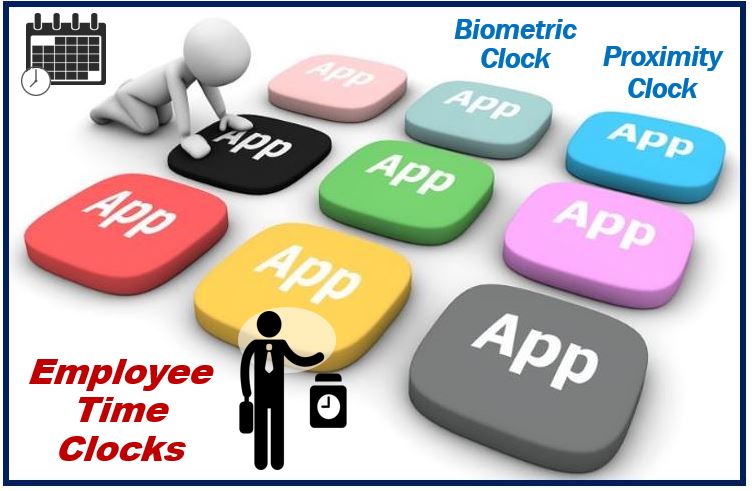Tracking employee hours can be a very tedious and time-consuming task for a supervisor. After all, it would help if you depended on employees recording their hours and account for any mistakes like personnel forgetting to clock out.
You’ll need to subtract breaks, total hours and cross-reference the worked hours with scheduled hours at the end of a pay period. Besides being time-consuming, the manual route increases the likelihood of errors and doesn’t give personnel insight into their payment. That’s where the employee time clock app comes in. Here’s a look at the different types of employee time clocks.

How Employee Time App Works
You can save time using an employee clock app, which allows you to determine the number of hours each employee worked weekly, daily, or monthly. This app doesn’t just give you an overview of how much your workers are doing. The app will, in turn, export the employee hours to the payroll provider.
You’ll understand the preferred working hours for each employee and you can schedule employees when they are available. This feature makes it possible to develop a shift calendar that considers workers’ personal lives, creating a more personal, positive, work setting.
Types of Employee Time Clocks
This device records the end and start times for hourly workers in the workplace. Based on the kind of tracking software, employees can punch in through an app or on a worksite console. The types of locks include:
Biometric Clock
The hardware device implements biometrics to verify a worker’s entity. Common biometrics include facial recognition, palm-prints, and voice recognition. Software powers this clock and is typically smart about maintaining time statistics.
They automate the procedure of clocking out or in depending on the most current action. You’ll frequently find them attached to an access point, for instance, a gate or door. Activating it opens the gate or door to prevent missed punches. Employees will thus need to record leaving and entering an area, signifying their present status.
It’s worth noting that biometrics are principal technology and can be costly. Nevertheless, their efficient capacity to verify identity can counteract the cost.
Pros
- They’re easy to operate and set up
- They function fast and can decrease bottlenecks during the beginning and end of a shift
- A major benefit of these clocks is that they don’t require passwords. Instead, employees use their physical features for identity verification. Simply touching this device will record the time and allocate it to a specific employee. This helps decrease mistakes and technical support prerequisites
- If you don’t want the culture of buddy punching in your company, this clock is ideal.
Industries that Use Biometric Clocks
These clocks are excellent for companies operating in clean environments. For instance, hospitality industries use these systems to manage huge staffs and recurrent shift changes. This includes convention centers, hotels, and conventional office settings. Faster access and the lack of passwords make clocking out and clocking it quicker for huge groups.
Biometrics is increasingly becoming popular in the patient care and healthcare industries. Hospitals use these clocks to verify identity and security concern is a major aspect of this kind of workplace. Huge numbers of workers and varying shift schedules are also considerations for all hospitals.
Proximity Clock
The hardware clock uses a card and its timer activates when an employee positions their card next to the device. Employers allocate a particular card to every worker. These objects are at times termed a prox card.
Workers maintain the identifiers and use them for activating the time clock. Prox cards identify employees and log them into the system. It might feature a manual button to verify whether an employee is clocking out or in. These clocks are also fast and convenient.
Pros
- They offer convenience for small businesses with huge groups of workers. They’re quick and won’t hold up lines throughout rush hour.
- They’re easy to set up and you can set them up in numerous locations to offer centralized management.
- They provide a higher security level. Prox cards are distinct to every employee and employers can deactivate them in case of a loss.
- They’re very precise and record data depending on the physical proximity to a distinct device.
Uses
Small companies with huge workgroups and numerous access points can benefit from these clocks. Fob-based clock systems permit numerous employees to clock in from whichever location at the office.
They’re convenient and make it easy and fast to prevent bottlenecks. Manufacturing companies use them for fraud prevention and security enhancement while white-collar employment settings use them to gauge attendance for salaried workers.
Clocking out and clocking in is a significant facet of tracking employees’ time and payroll. These days, employers have shifted from timesheets and punch cards, giving way to new technology to track employee attendance through the employee time clock app. If you’re looking to save time and money in payroll processing, consider investing in this system.
Interesting related article: “What is Productivity?“

